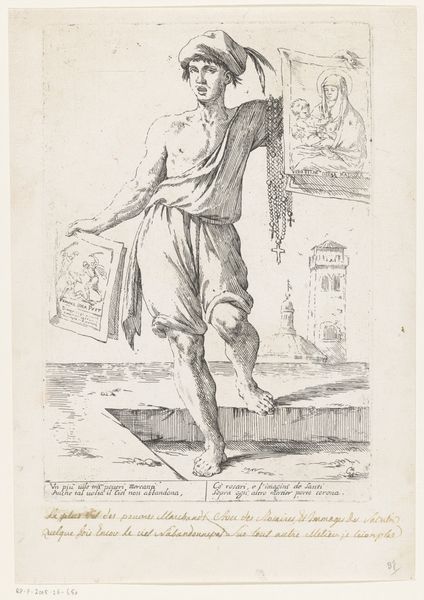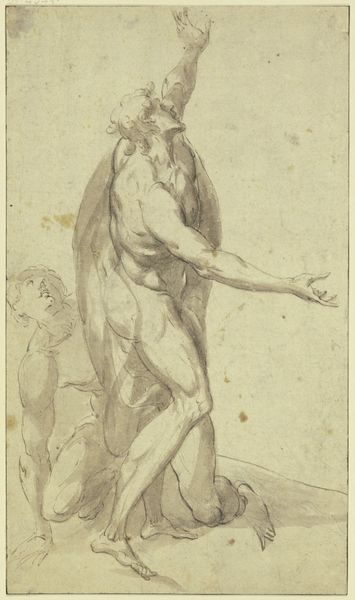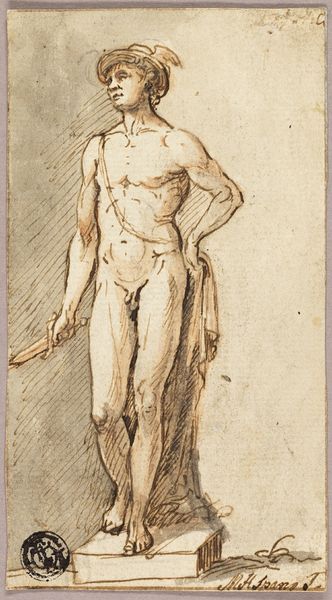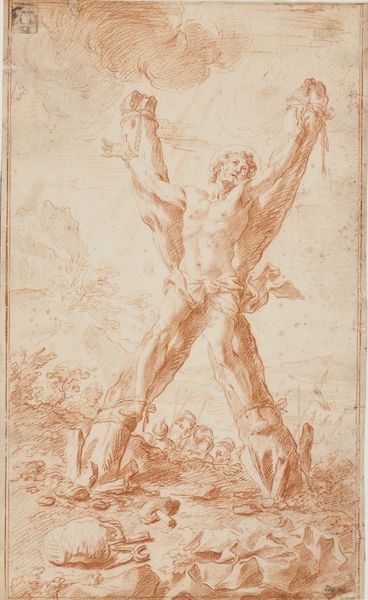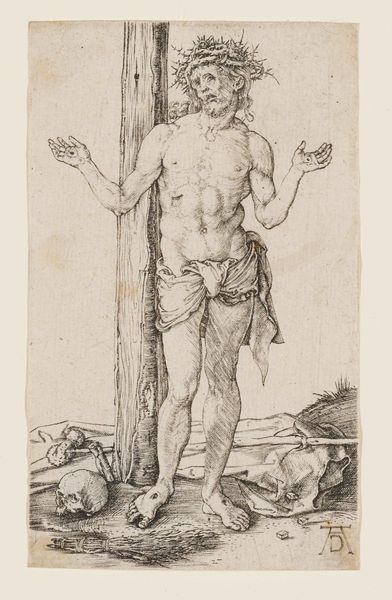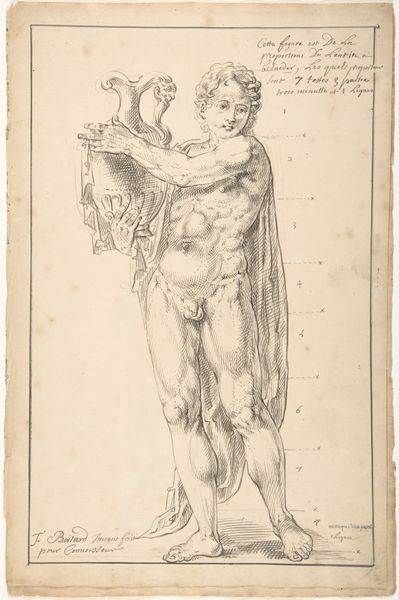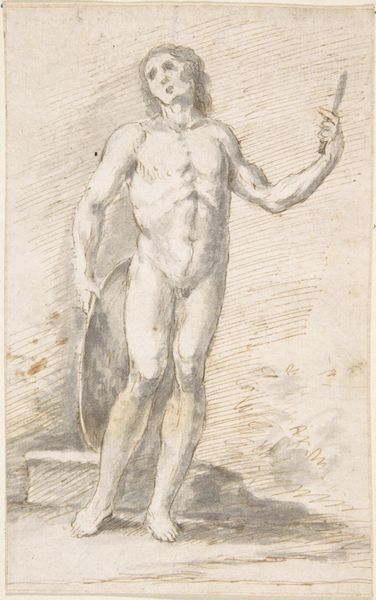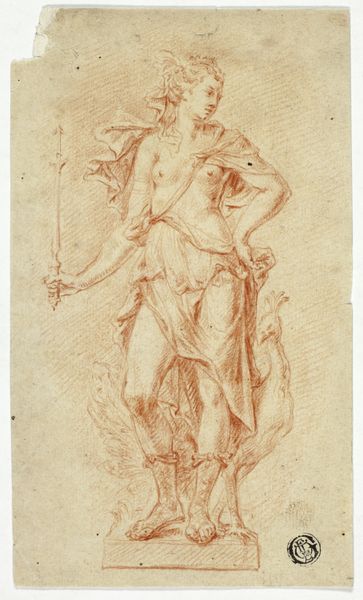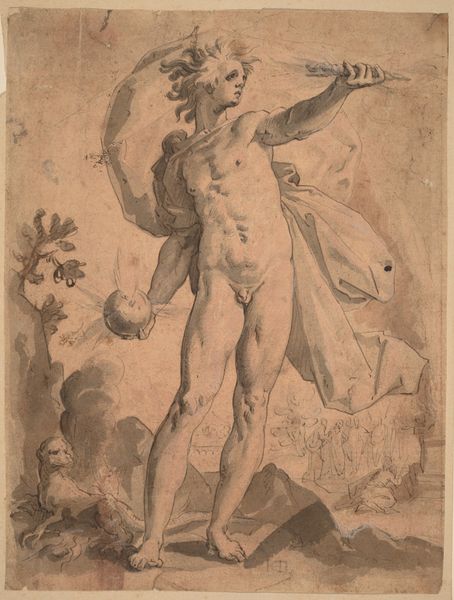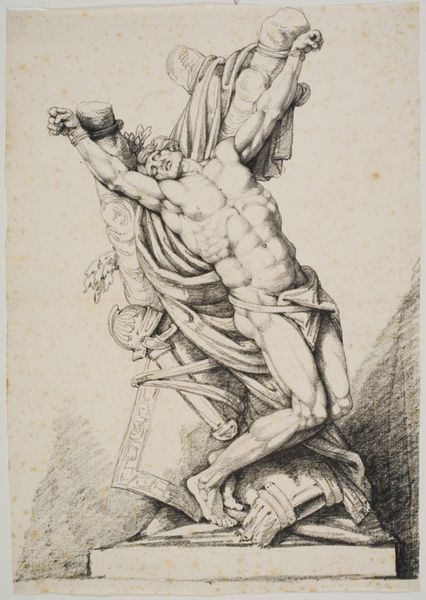
drawing, print, paper, ink, chalk, pen
#
portrait
#
drawing
# print
#
paper
#
ink
#
ink drawing experimentation
#
chalk
#
water
#
pen
#
portrait drawing
#
genre-painting
#
italian-renaissance
#
italy
Dimensions: 273 × 194 mm
Copyright: Public Domain
Editor: So, here we have Giuseppe Maria Mitelli's "Vendor of Rosaries and Sacred Images," created around 1660. It’s an ink, pen, chalk and wash drawing on paper. I'm immediately struck by the dynamism; he almost leaps off the page, doesn't he? What are your thoughts on this piece? Curator: He does indeed. From a historical perspective, this print offers insight into the visual culture of 17th-century Italy and the public role of religious imagery. Consider how prints like these circulated. They weren't simply aesthetic objects; they were commodities within a complex system of religious belief, social practice, and commercial exchange. The vendor's attire, for instance – how might that resonate with his audience and the products he sells? Editor: I see your point. He seems to be purposefully dressing in clothing with the aim to signal exoticism, which certainly affects how one perceives the work. How did prints influence the understanding and spread of religious and cultural ideas in this period? Curator: Exactly. These prints made religious iconography accessible to a wider audience. Think of it as an early form of mass media, shaping devotional practices and reinforcing specific religious narratives. What do you observe about the specific religious images the vendor is offering? What beliefs, behaviors or institutional norms do you think are promoted here? Editor: The images of the Madonna and what appears to be the angel chorus give it a clear purpose for consumption that has to do with salvation and Catholic dogma, for instance. They served to visualize the holy, to make it tangible and perhaps also more intimate. I hadn't considered that aspect so fully. Curator: Indeed. And consider where and how these prints would have been sold and displayed – the vendor might also have religious imagery available at an outdoor public festival where a certain socio-political message would have to be displayed and advertised by the vendor's look and manner. That tells us a great deal about the culture, what it values, and how those values are disseminated. Editor: This gives me much to consider! Thank you for helping me think about "Vendor of Rosaries and Sacred Images" not just as a work of art, but as a cultural artifact shaping, and shaped by, the society it existed in. Curator: A pleasure. It highlights the power of art in negotiating identity and faith within society, which, for me, underscores the continuing relevance of this image.
Comments
No comments
Be the first to comment and join the conversation on the ultimate creative platform.
